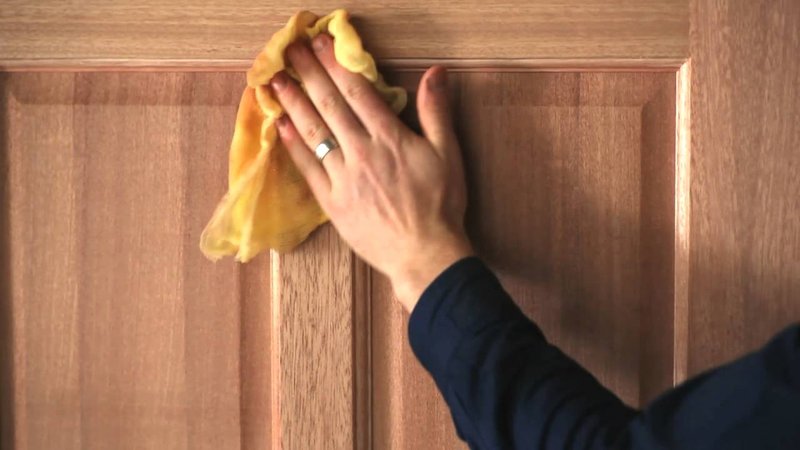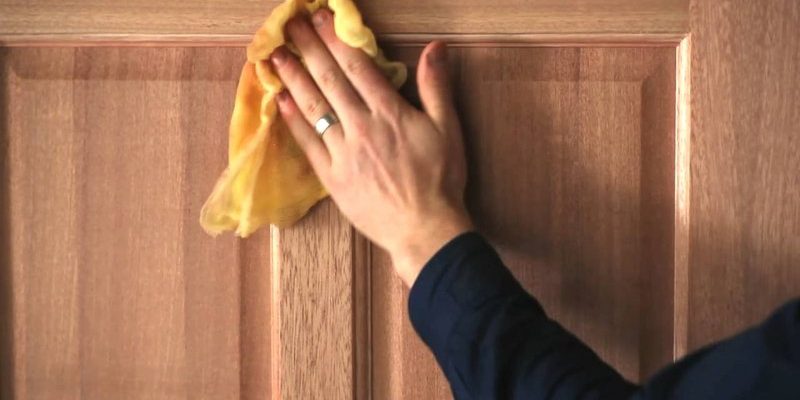
Here’s the thing: cleaning exterior door hardware isn’t a one-size-fits-all task. Different stains need their own game plan. The good news? With a bit of know-how and the right approach, you can get those handles, knobs, and smart locks looking sharp—without messing up the finish or accidentally resetting your code. Whether you’ve got brass, stainless steel, or powder-coated handles, learning how to tackle specific stains is the trick to a front door that feels fresh, welcoming, and clean.
Why Do Exterior Door Hardware Stains Happen?
Let me explain: your front door hardware is a magnet for all sorts of stains. You’ve got oils and dirt from hands, minerals from water, and even airborne stuff from cars driving by. It doesn’t matter if you’ve got a simple Yale lock, a Wi-Fi smart deadbolt, or an old-school brass knob—exterior hardware takes a beating.
Stains often start small and sneak up over time. Think about rain puddling on your knob or someone’s sunscreen-covered hand grabbing the handle. The stain recipe changes based on the metal, the weather, and even how often you touch the door. While some gunk is just cosmetic, others—like rust or corrosion—can actually mess with how your lock functions or make the hardware feel sticky when you try to sync up your keypad.
Honestly, a big part of cleaning success is just noticing the early signs. That white haze? Hard water. Orange streaks? Rust. Black smudges? Could be anything from fingerprints to air pollution. Each of these needs its own cleaning code. If you get the wrong product or method, you might strip a finish or damage a touchpad. So figuring out “what is this stain, really?” is your first troubleshooting step.
How To Clean Off Rust Stains From Exterior Door Hardware
You might be wondering: Why does rust show up on some handles but not others? It comes down to the metal type and how well it’s sealed. For example, even “stainless” steel can develop rust if there’s a scratch or the sealant wears off. Rust is sneaky, showing up as orange flecks or streaks, especially around screws, plates, or seams.
Here’s the step-by-step way I recommend tackling rust:
- Start by dry-wiping. Use a microfiber cloth to get rid of loose dirt, which helps you see how bad the rust is.
- Make a gentle paste. Mix a bit of baking soda with water to form a paste. Spread this over the rust spots and let it sit for about 15–20 minutes.
- Scrub with care. Use a soft-bristle toothbrush to gently scrub the paste in circles. Don’t reach for steel wool—that’ll scratch things up fast.
- Wipe clean and dry. Rinse with a damp cloth, making sure no baking soda is left behind. Then, immediately dry the area with a clean towel to prevent new stains forming.
If rust is stubborn, you can step up to a specialized rust remover. But here’s a tip: always test in a hidden spot before going all in. Some finishes, especially on electronic keypad remotes like August Smart Locks, can get cloudy or damaged if you use harsh chemicals. And never soak powered hardware—the goal is clean, not reset!
Dealing With Hard Water Spots On Door Handles
Hard water is a silent troublemaker. If your door gets splashed by sprinklers, rain, or even from cleaning the porch, you may start seeing dull white or cloudy spots that just won’t wipe off. These stains are from minerals like calcium and magnesium, and they love sticking to metal—especially chrome, nickel, or stainless finishes.
To get rid of hard water spots safely, stick with simple ingredients:
- Dampen a soft cloth with a mix of water and a splash of white vinegar (about 1 part vinegar to 3 parts water).
- Press and hold the cloth onto the stained area for a couple of minutes. The vinegar helps dissolve the minerals without scratching the finish.
- Wipe gently, moving in small circles. You might need to repeat if the spot is stubborn.
- Dry immediately with a clean towel to stop new spots from forming. Moisture left behind is basically an invitation for more stains.
If you’ve got an electronic lock or code keypad installed (like a Nest or Yale Assure), just make sure no liquid seeps into the electronics. Don’t spray anything directly—always apply to the cloth first. For powder-coated handles, stick with vinegar diluted even further, since those finishes can be more sensitive.
Pro tip: Hard water spots are easiest to prevent. A quick wipe-down every week (especially after rain) makes a huge difference.
Removing Black Smudges and Oil Stains
Black smudges and fingerprints are like the bad pennies of door hardware stains—they always come back. These types of stains are mostly from skin oils, rubber gloves, or even residue from car exhaust and pollution. They’re especially noticeable on matte black, bronze, or brushed hardware and can make even new Schlage or Baldwin handles look old.
Here’s what I’d do:
- Use a mild dish soap diluted in warm water. Dip a microfiber cloth in the soapy water and wring it out so it’s just damp.
- Rub the smudges gently. Don’t scrub like you’re cleaning a grill—door hardware finishes are surprisingly easy to scratch or fade.
- Rinse with a clean, damp cloth. This gets rid of any soap residue that can attract more dirt.
- Pat dry right away, especially in seams or around keyholes, which can collect moisture and grime.
If you’re dealing with a stubborn spot, a bit of rubbing alcohol on a cotton swab can help—but avoid using alcohol on painted or powder-coated hardware unless you’ve checked the manufacturer’s troubleshooting page. Sometimes, a gentle “reset” (just a regular wipe-down) is all you need to keep your lock or handle looking sharp.
How To Clean Brass and Bronze Hardware Without Damage
Brass and bronze hardware can look stunning at your entryway but show stains quickly—think brownish fingerprints, greenish corrosion, or uneven tarnish. The problem? Harsh cleaning can strip the protective coating or even change the color, especially with older pieces or those with a special patina.
Here’s my gentle approach:
- Mix a homemade cleaner of lemon juice and baking soda into a loose paste. Spread it on the stain, but don’t let it sit for more than a couple of minutes.
- Buff with a soft cloth using little circles. You’ll see tarnish start to lift off—but don’t force it if the stain is being stubborn. Gentle is key.
- Wipe away all residue with a clean, damp cloth and dry right away. Moisture is not your friend here.
- Polish with a plain dry cloth. If you want a little extra shine, use a specialty brass polish—but check your hardware’s finish first, especially if it’s lacquered or aged.
Honestly, sometimes those “imperfections” are part of the charm. If you’re troubleshooting stains on keypad remotes with a brass faceplate, always keep moisture far from the electronics. The best move? Sticking with simple, non-abrasive cleaners and treating old brass gently.
Cleaning Powder-Coated and Painted Door Hardware
Powder-coated and painted finishes are durable, but surprisingly sensitive to harsh cleaners and scraping. You’ll recognize them by their rich, matte colors (think sleek black or bold red handles) and sometimes a slightly textured feel. These finishes hide fingerprints better but still show water spots, chalky residue, and sometimes what looks like faded paint after a few seasons of sun and rain.
The safest cleaning method is also the simplest:
- Lukewarm water and a soft sponge or cloth is almost always enough. Avoid scrubbing pads, magic erasers, or anything gritty—they’ll dull the finish or even take off the paint.
- Use a gentle dish soap if you’re facing greasy stains, but rinse thoroughly. Soap film can leave streaks on matte finishes.
- Dry thoroughly with a towel. Don’t air dry—water spots can appear if minerals are left behind.
If you’re troubleshooting a stubborn stain, try a sprinkle of baking soda on a damp cloth and gently rub. Always avoid solvent cleaners, alcohol, or ammonia products; these can “reset” the paint, meaning you’ll have to touch up or repaint the hardware. For anything with a built-in battery compartment (like a code lock remote), keep the cleaning area dry so moisture doesn’t sneak inside.
What About Smart Locks and Keypad Door Hardware?
Smart locks and keypad systems (like August, Schlage Encode, or Kwikset Halo) add a new wrinkle to cleaning. Not only do you have to deal with usual stains, but you also need to make sure you don’t trigger battery issues, reset the code by accident, or leave behind moisture that could mess with the electronics.
Here’s how I handle it:
- Turn off the lock’s power or remove the battery before cleaning, if possible. No one wants a surprise while wiping down the sync button.
- Use a lightly damp cloth (water or mild soap) to clean smudges, fingerprints, and dust. Don’t let any water get near seams, battery compartments, or speaker holes.
- Skip the spray bottles. Apply any cleaner right to the cloth, not the lock.
- For stuck-on grime, a cotton swab dipped in a diluted vinegar solution can help. Go slow and use as little liquid as possible.
If you have a touchscreen keypad, never use alcohol, glass cleaner, or anything advertised as a “disinfectant.” These can wear away coatings and possibly cause the pad to glitch or stop recognizing input, leading to frustrating troubleshooting sessions. Once you’re done, reinsert the battery and check that all code and sync functions still work.
Preventing New Stains and Keeping Hardware Looking New
Honestly, the best defense against stains is regular, gentle cleaning before problems start. Most hardware, from basic knobs to fancy smart locks, lasts longer and works better when you give it a little routine care—and you don’t need to reset your cleaning routine every time you spot a new smudge.
Simple habits that help:
- Wipe down hardware weekly with a dry microfiber cloth, especially after rain or heavy use.
- Avoid harsh chemicals or bleach, which can damage almost every type of finish.
- Keep an eye on rubber gaskets or weather seals—they help stop water, but if they crack, leaks can cause stains inside the mechanism too.
- Routinely check for loose screws or sticky buttons, especially on code locks. Fixing small issues early keeps the remote and hardware running smoothly.
A final tip: if you need to deep clean, always double-check care instructions for your specific hardware or smart lock brand. Some finishes or electronics might call for special TLC. A little prevention can save you a lot of elbow grease—and your locks, handles, and keypads will keep working (and looking) great.
Taking care of your exterior door hardware isn’t just about appearances. It’s about keeping your entryway reliable, secure, and welcoming. And honestly, knowing how to clean off specific types of exterior door hardware stains makes you the kind of homeowner who’s got everything under control.
